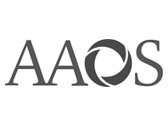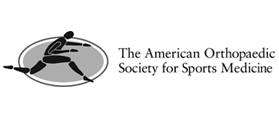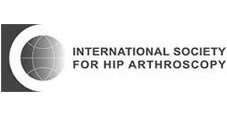Bankart and Labral Repair
Arthroscopic Bankart Repair
Shoulder Anatomy
The shoulder joint (glenohumeral joint) is a ball and socket joint, where the head of the upper arm bone (humerus) attaches to the shoulder socket (glenoid cavity). The shoulder socket is extremely shallow and therefore needs additional support to keep the shoulder bones from dislocating. The labrum, a cuff of cartilage that encircles the shoulder socket, helps serve this purpose by forming a cup for the humeral head to move within. It provides stability to the joint, enabling a wide range of movements.
What is a Bankart Tear?
The labrum can sometimes tear during a shoulder injury. A specific type of labral tear that occurs when the shoulder dislocates is called a Bankart tear. This is a tear to a part of the labrum called the inferior glenohumeral ligament and is common in the young who sustain a dislocation of the shoulder. A Bankart tear makes the shoulder prone to repeat dislocation in patients under 30 years of age.
How is a Bankart Tear Diagnosed?
Your physician will ask about your medical history and perform a thorough physical examination of your shoulder. Your doctor may recommend an additional X-ray or MRI.
What are the Treatment Options?
Conservative treatment measures for a Bankart tear include rest and immobilization with a sling, followed by physical therapy.
Bankart repair surgery is indicated for a Bankart tear when conservative treatment measures do not improve the condition but instead results in repeated shoulder joint dislocation.
Arthroscopic Bankart Repair Procedure
Bankart surgery can be performed by a minimally invasive surgical technique called arthroscopy.
- During an arthroscopic Bankart procedure, your surgeon makes a few small incisions over your shoulder joint.
- An arthroscope, a slender tubular device attached with a light and a small video camera at the end is inserted through one of the incisions into your shoulder joint.
- The video camera transmits the image of the inside of your shoulder joint onto a television monitor for your surgeon to view.
- Your surgeon then uses small surgical instruments through the other tiny incisions to trim the edges of your glenoid cavity.
- Suture anchors are then inserted to reattach the detached labrum to the glenoid. The tiny incisions are then closed and covered with a bandage.
- Arthroscopy causes minimal disruption to the other shoulder structures and does not require your surgeon to detach and reattach the overlying shoulder muscle (subscapularis) as with the open technique.
Postoperative Care for Arthroscopic Bankart Repair
The following are the postoperative care details following arthroscopic Bankart repair:
- After your surgery, you will spend about an hour in the recovery room.
- Your physical therapist will start you on shoulder exercises the day following your surgery to strengthen and improve the range of motion of your shoulder joint.
- You will be allowed to perform your daily activities as tolerated, but without lifting objects heavier than a plate or glass, while you heal.
- Your arm may be placed in a sling for three weeks to restrict the use of your operated shoulder.
- You may resume light low-risk activities, like jogging and swimming, 8 to 10 weeks after surgery, and may be advised to avoid contact sports for some time.
Risks and Complications of Arthroscopic Bankart Repair
Arthroscopic Bankart repair is a relatively safe procedure. Being minimally invasive, it is associated with fewer risks and a quicker recovery. Some of the potential risks include:
- Infection
- Injury to adjacent nerves or blood vessels
- The stiffness of the joint
- Pain
Labral Debridement and Repair
What is the Shoulder Labrum?
The shoulder is made up of three bones: the scapula (shoulder blade), the humerus (upper arm bone), and the clavicle (collarbone). The labrum is the cartilage that surrounds the glenoid (shoulder socket) and provides stability to the shoulder. Tears or fraying may occur in the labrum from dislocating your shoulder, vigorous pulling or pushing of the arm, repetitive overhead activity, or direct trauma.
What is Labral Debridement and Repair?
Labral debridement and repair is a surgical procedure to remove loose and damaged cartilage in the labrum and to secure the torn labrum to its normal attachment to the bone.
When is Labral Debridement and Repair Surgery Necessary?
Labral debridement surgery is commonly performed for relatively large labral tears. If the tear is small and only causes minimal symptoms when you move your shoulder, removing the ragged edges and any loose labrum fragments may be enough to relieve your discomfort. The shoulder may become unstable if the labral tear is larger. If this is the case, the labral tear may need to be repaired with suture anchors, rather than simply removing the damaged portion of the labrum.
Preparation of the Labral Debridement and Repair Surgery
Preparation for labral debridement and repair may involve the following steps:
- Before the surgery, you will receive a complete medical evaluation and your doctor will discuss your surgery in detail.
- Your doctor will perform a physical exam of the shoulder and take a medical history.
- Talk to your doctor about the medicines you are taking prior to the procedure and allergies to any medicines or anesthesia.
- You may be asked to stop taking blood-thinners, anti-inflammatories, aspirin, or other supplements for a week or two.
- Do not eat or drink 6-8 hours before the surgery.
- Arrange for someone to drive you home after the surgery.
Procedure for Labral Debridement and Repair Surgery
- The surgery is performed under anesthesia
- Your surgeon makes several small incisions in the shoulder after the anesthesia has taken effect.
- An arthroscope is a tiny camera that is inserted into one of the incisions to help direct images during the procedure.
- To fill the joint with fluid, a tool is inserted into one of the small incisions. This widens the joint, allowing the surgeon to evaluate the damage more thoroughly.
- The surgeon will remove the loose and damaged cartilage and then the torn labrum is reattached to the bone with the help of suture anchors.
- The incisions may be closed with minimal sutures and covered with a bandage.
Postoperative Care after Labral Debridement and Repair Surgery
In general, postoperative care and recovery after labral debridement and repair surgery will involve the following steps:
- You will be transferred to the recovery area where you will closely observe for any allergic/anesthetic reactions and your vital signs will be monitored.
- Following the surgery, your arm will be placed in a shoulder sling for 2 to 4 weeks to rest the shoulder and promote healing.
- Ice packs can also be used to help reduce swelling and pain in the shoulder.
- You may experience pain, swelling, and discomfort in the shoulder area. Pain and anti-inflammatory medications are provided as needed to address these.
- An individualized physical therapy program may be given to help strengthen your shoulder muscles and improve your shoulder function.
- For labral repair, range of motion exercises are started at 1-week post-op, and strengthening begins at 8-12 weeks.
- A follow-up appointment will be planned on a regular basis to monitor your progress.
Risk and Complication of Labra Debridement
As with any surgical procedure, there are potential risks and complications that may occur. Those related to labral debridement and repair may include:
- Infection
- Bleeding
- Persistent or increased pain
- Anaesthetic/allergic reactions
- Damage of nerves or blood vessels
- Re-rupture of the labrum







